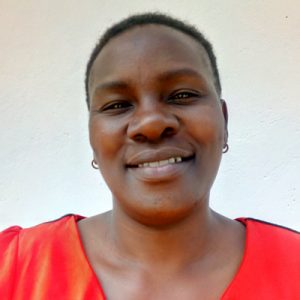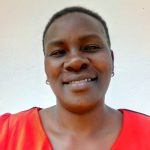Khabondi Primary School has a booming population of 740 students and 17 teachers and no reliable water source. The school has suffered without a safe water source since its well broke down nearly twenty years ago. The only water available on the school campus is what a 10,000L plastic tank can collect when it rains or small containers of water that students bring to school. The rain tank is too small, and seasonality has worsened the situation, causing it to dry faster. This leaves everyone thirsty, constantly searching for additional water, and challenged to concentrate and learn.
When there is no rain, or the tank runs dry, the children must collect water from an unprotected spring 3 KM (1.75 miles) away during school or bring water from other unknown sources near their homes. It is exhausting for the children to carry the heavy water containers (a full Jerrican weighs 40 lbs), and it keeps them out of class. Drinking any of this water is risky since it is contaminated. Students struggle with persistent coughing, headaches, dehydration, and water-related illnesses like typhoid and amoeba. These illnesses keep them away from school and steal more learning opportunities.

"The current water situation in school has really impacted my life negatively. I have suffered dehydration due to [the] lack of drinking enough water and also drinking water brought to school from home by our learners where its safety is not guaranteed," said 55-year-old headteacher Patrick Maina, shown below at the school's inadequate rain tank.

There are always delays in the school schedule in the morning, either because students are collecting water or they arrive without water and are punished. The water that is collected by the school is allocated for various purposes, primarily for cleaning the premises and preparing meals for the staff. As a result, there is only a meager amount of water left for drinking. This scarcity of water becomes evident during lunchtime when the students are expected to return home and fetch additional water from the spring or any other available sources, which is most likely to be contaminated.

"Lack of water in our school has caused a lot. Personally, I have had constant headaches thinking of carrying water from home, which means going to fetch water in the evening after school or waking up earlier to walk long distances searching for water to take to school," said 13-year-old Trizah K.(shown above).
The school is thrilled about the prospect of receiving a new well that will provide a dependable supply of clean and safe water. This will allow the students to focus on their studies without any worry and flourish. Given the opportunity to focus on their schooling, these students will have the opportunity to envision a brighter future for themselves, unencumbered by the constant worry of where they will get water and how sick it will make them.
Water at schools is unique, which is why we need unique solutions.
The Proposed Solution, Determined Together...
At The Water Project, everyone has a part in conversations and solutions. We operate in transparency, believing it benefits everyone. We expect reliability from one another as well as our water solutions. Everyone involved makes this possible through hard work and dedication.
In a joint discovery process, community members determine their most advantageous water solution alongside our technical experts. Read more specifics about this solution on the What We're Building tab of this project page. Then, community members lend their support by collecting needed construction materials (sometimes for months ahead of time!), providing labor alongside our artisans, sheltering and feeding the builders, and supplying additional resources.
Water Access for Everyone
This water project is one piece in a large puzzle. In Kenya, Sierra Leone, and Uganda, we're working toward complete coverage of reliable, maintained water sources that guarantee public access now and in the future within a 30-minute round trip for each community, household, school, and health center. One day, we hope to report that this has been achieved!
Training on Health, Hygiene & More
With the community's input, we've identified topics where training will increase positive health outcomes at personal, household, and community levels. We'll coordinate with them to find the best training date. Some examples of what we train communities on are:
- Improved hygiene, health, and sanitation habits
- Safe water handling, storage & treatment
- Disease prevention and proper handwashing
- Income-generation
- Community leadership, governance, & election of a water committee
- Operation and maintenance of the water point
Handwashing Stations
Alongside each water source, we also provide two new gravity-fed handwashing stations that will allow everyone at the school to wash their hands without running water. Handwashing is so important to help prevent future water-related illnesses in the school community.
The student health club will maintain the stations, fill them with water, and supply them with soap (which we will teach the school community how to make during the training!).
VIP Latrines
In addition, we will construct two triple-door Ventilated Improved Pit (VIP) latrine blocks designed to prevent fecal disease transmission. Each latrine will have a cement floor, which is easy to use and clean regularly. Three doors will serve the girls, and three doors will serve the boys.

 Borehole Well and Hand Pump
Borehole Well and Hand Pump
 Rehabilitation Project
Rehabilitation Project

































